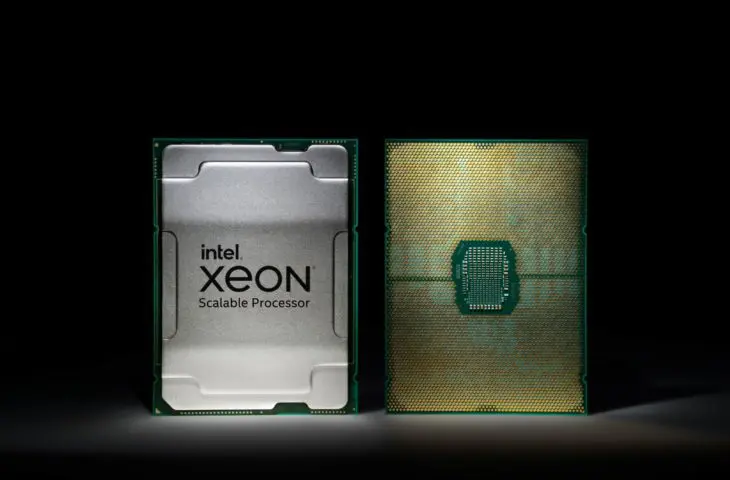Intel reveals what the future of its Xeon portfolio looks like. The manufacturer is accelerating the timeline for 5 nm chips and getting ready to build Xeon chips with Atom-based cores.
Intel is finally showing what we can expect from its server chips in the coming years. The roadmap for the Xeon portfolio shows that the manufacturer is ahead of schedule with the development of its 5 nm node. The focus on efficiency that Intel introduced with Alder Lake will also come to Xeon in the future.
Intel 7-Xeons
In March, Sapphire Rapids will be released: the fourth generation of Xeon Scalable. Those Xeon chips are baked on the Intel 7-node (10 nm). That makes the chips a revolution on the third generation of Xeon Scalable processors hitting the shelves today. As we reported earlier, the chips will be DDR5 compatible and come in variations with HBM on board.

After Sapphire Rapids, it will be Emerald Rapids’ turn in 2023. Those chips Intel will build again with Intel 7 and are presumably little more than a refinement of Sapphire Rapids.
On to 5 nm
Things will get more interesting in 2024. That’s when Intel wants to unleash Granite Rapids on the world. Those Xeon processors should already be baked on the Intel 3-node. Intel 3 is Intel’s name for its 5 nm node. That was originally scheduled for 2024 but is now said to be operational sooner. Good news for Intel, which does want to shift up a gear if it is to fulfill CEO Pat Gelsinger’s ambition to regain technical leadership in the world of chip manufacturing.
read also
What You Need to Know about Processors and Nanometers
By definition, the more advanced node decreases the power consumption per transistor, so Granite Rapids processors will be a lot more efficient than their predecessors. Higher performance per watt is currently a very important measure of server chip quality. After all, data center operators want more performance without making their power and cooling bills prohibitive. Moreover, just about all large companies have ecological goals that they can only meet with greater efficiency.
E cores in Xeon
In terms of efficiency, Intel gets competition from Arm. For example, AWS is building its own Arm-based Graviton chips that deliver far more horsepower per watt than the Xeon offerings. In 2024, Intel offers a clear answer to that with Sierra Forest.
Sierra Forest is the code name for a new subfamily of Xeon chips based on efficiency cores. We have known the distinction between performance (P) cores and efficiency (E) cores at Intel since the introduction of Alder Lake. The main Xeon lineup for the foreseeable future will continue to consist entirely of P cores but Intel also foresees with Siera Forest a variant built with new E cores.
read also
Intel shows future of Xeon portfolio: 5 nm and Atom cores
Intel’s E cores are an evolved version of Atom cores. The manufacturer may put about four such cores in the place of one P-core. Siera Forest will thus consist of less powerful but much more economical cores that can probably handle more threads. For whom exactly the Xeons with E cores are intended, Intel does not say, but there are presumably enough data center workloads where the chips will add value. Intel does not plan to combine P cores and E cores on a single Xeon CPU, as it does with Alder Lake in the Core range.
Necessary rapids
About the plans after 2024, Intel is not revealing anything yet. In any case, it seems that Intel is living up to its codename “rapids” over the next three years: its roadmap is accelerating. That’s necessary: at the current pace, Intel can at best keep up with competitors AMD and TSMC but cannot outpace them. These plans are a step in the right direction for Intel, although you can be sure that the competition is not sitting still either.
